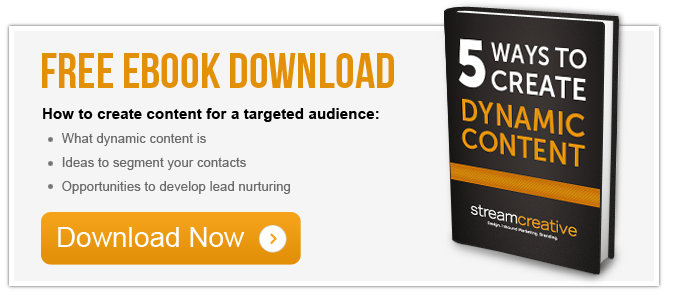 In recent years, strategy and our ability to analyze and customize prospect and customer data has changed. Marketing tools in particular have become incredibly sophisticated such as CRM resources, marketing automation, content management, social scheduling & monitoring, surveying, email distribution and much more.
In recent years, strategy and our ability to analyze and customize prospect and customer data has changed. Marketing tools in particular have become incredibly sophisticated such as CRM resources, marketing automation, content management, social scheduling & monitoring, surveying, email distribution and much more.
More than ever before, we now have the ability to lean on these tools and strategies to build success through knowledge. While this is true, the reality is that only 50% of marketers use data-driven marketing strategies to customize and enhance the customer experience. Marketers who realize the value of learning how to deliver actionable insights like what’s working, what’s not and ROI, and use it to create a better customer experience – will bring more value to their organizations now, and in the future. Not sure where to start? Here are 7 steps marketers can take to make campaigns more relevant and their contributions to a company’s overall goals, invaluable.
Step 1: Identify what data you are lacking.
Do a quick assessment of the strength of your organization’s current data and strategies to obtain new data. Where are you lacking? Make sure everyone who will be providing input or will benefit from the outcomes are aware of the existing resources, constraints, and needs, to aid with developing a collaborative roadmap.
Step 2: Determine your role in helping achieve the company’s goals.
What are the key performance indicators (KPIs) you will be focusing on in order to achieve your goals? Having a firm understanding of what you want to achieve will give you a good start to putting the best plan in place.
Step 3: Decide what data needs to be collected to put you on the right path to achieving your goals.
How many times have you sent out a survey only to get the results back and realize you forgot to ask an important question? Smart marketers know that collecting the right data can be the most critical part of the process.
Think about all the decisions you will need to make down the road to achieve your overall goals. What information can you ask your customers that will make that decision-making process easier? In addition, ask for information that will give you a clear view of buying habits and how you may be able to contact prospects and customers in the future.
Step 4: Collect data.
Most qualified leads and customers are happy to offer their opinion and information about buying habits if the ask is done in a way that is not disruptive and comes from a genuine source. In some cases, it may be in an organization’s best interest to use a third party resource to assist with data collection and ensure the customer has a positive experience while maintaining the best possible perception of the business.
Step 5: Create a buyer journey map and persona(s) outline.
Outlining your target buyer personas and drafting a buyer journey map allows a marketer to establish a clear plan based on the data acquired. By analyzing an organization’s buyer journey map, you can use the data shown to create a hypothesis (in a sense) and define the tactics that will help accomplish your overall vision and goals.
It is amazing what information can be learned about prospects and customers during the buyer persona and journey mapping process. The level to which you will be able to use the data acquired depends heavily on the questions you ask as well as the depth of your research and the individual’s responses. Collecting the right information can propel you on a path to establishing a strong, data-driven plan that will lead to success in the future.
Step 6: Deploy persona-focused information and offerings.
Now that you have valuable data and a plan consisting of strategies and tactics in which to use it, now is the time to start “wowing” your prospects and customers. How can you use the data obtained to segment and personalize every step of the sales funnel? Can you also show prospects and customers specific products or services that will address their individual pain points or needs? The more you personalize a buyer’s experience based on the data you know about their persona and specific wants / needs, greater demand and loyalty will be established.
Stats show that 45 percent of customers are unlikely to buy or engage with a brand if they don’t make things relevant and personal. In fact, 30 percent of consumers will simply ignore communications from even favorite brands if marketing isn’t targeted. Marketers that don’t use data to create an exceptional consumer experience will continue to struggle and see declining results – especially with a continued focus on the use of innovative technology in the future.
Step 7: Measure your success and shortcomings.
How often do you struggle to define clear outcomes and value of a marketing campaign? Did site visits increase, leads increase, or downloads increase?
The best part about data driven marketing strategy is having the ability to analyze and measure outcomes to track true ROI and gain valuable insights. And that is something marketers are continually asked to help communicate the overall business value.
With the technology and tools that are available to marketers today, few campaign strategy decisions should be made without putting in the effort to collect, organize, analyze and activate prospect and customer data. When data is used beyond just prospecting, it has a real ability to help organizations build upon and enhance customer relationships.
What steps have you taken to become a stronger data-driven marketer?





